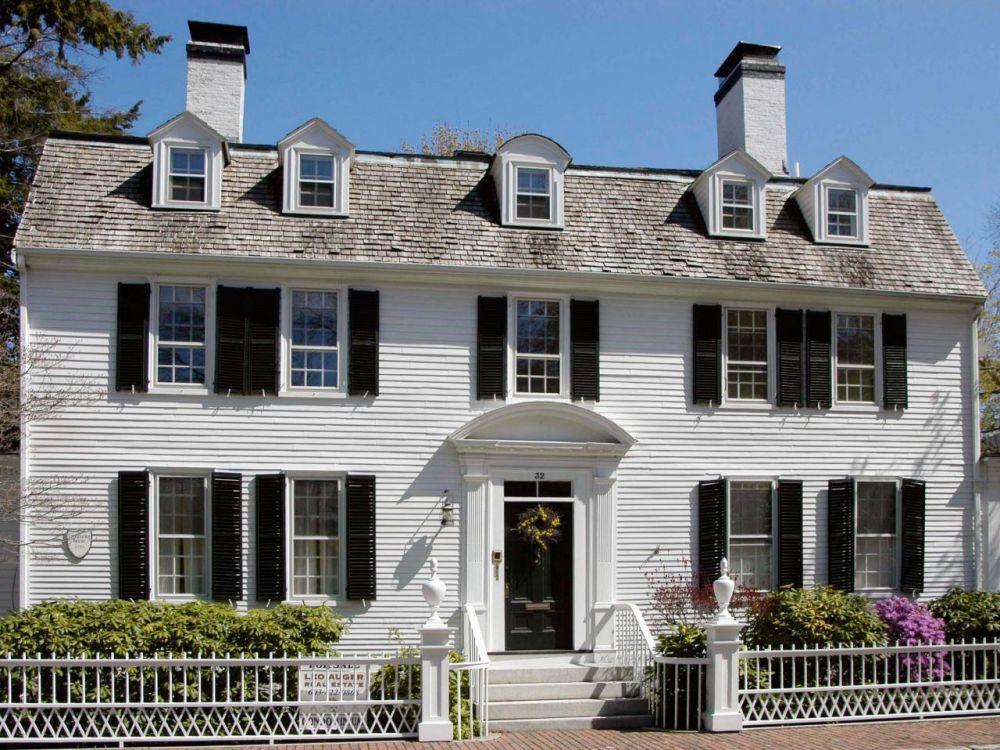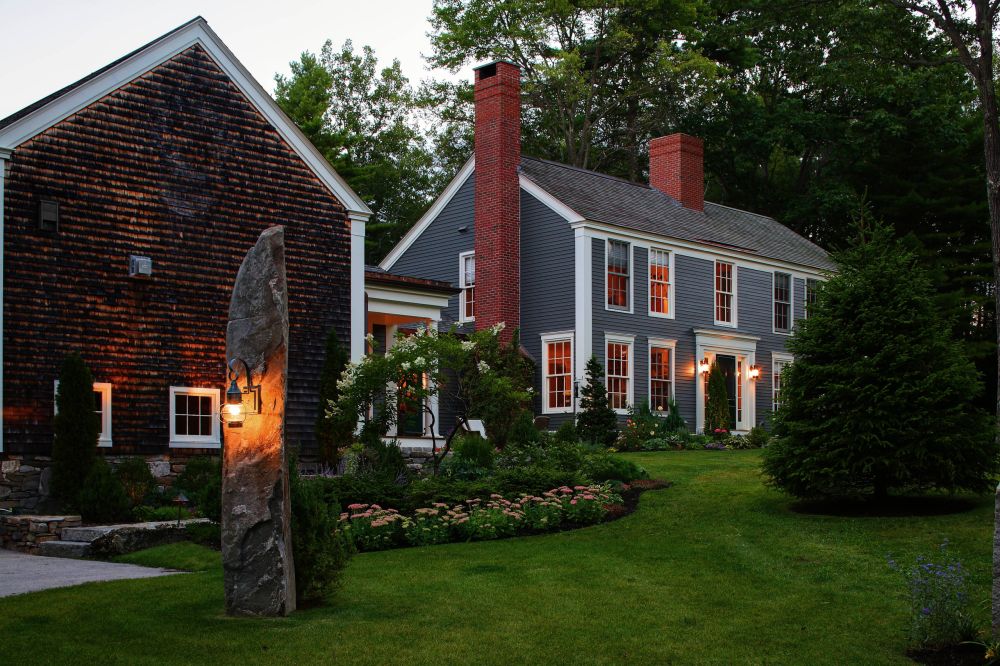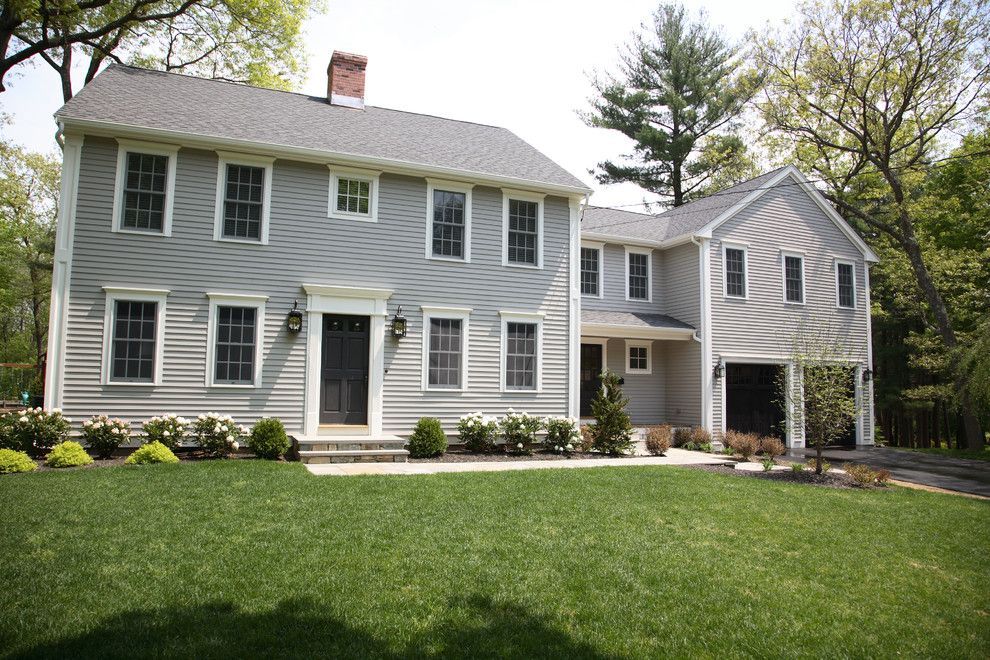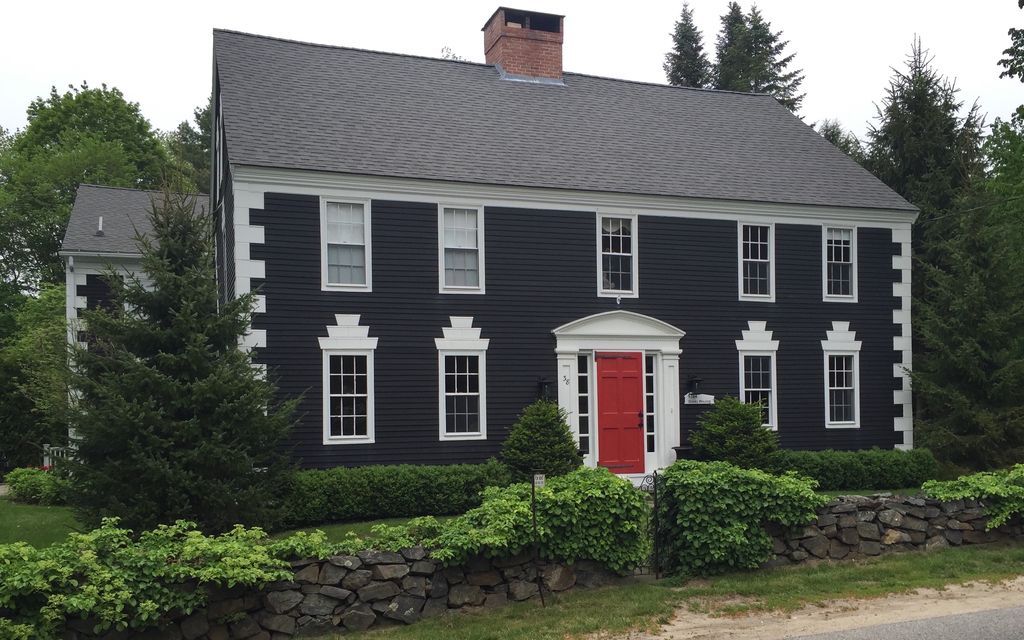If you grew up in the U.S., you probably went to some kind of museum in a historical home. Scattered across the country, they all smell like dust and memories and after the tour, you probably looked behind you for faces of long gone children peeking through the windows. And maybe you noticed that the house looked the same as the last old home you toured. Most likely, it was an example of Colonial Revival architecture.




While touring an old Colonial home is a fun experience, living in one presents it’s challenges. There is the unspoken urge to protect the history that the walls hold while making the space livable for you and your family. Learning about the history of the home can help you decide what is important to the integrity of a Colonial home and what you can change on a whim. Here is everything you need to know about Colonial homes.
Colonial homes came with the landscape of the early American colonies. The styles varied by what power controlled the region but the Colonial homes we think of were modeled after the ever popular Georgian houses. These began with a strict nine window grid and front door across the facade. Mostly made from wood, you might find multiple chimneys and in grander houses, a wing or two off the sides. Later homes boasted brick across the front of the house with siding around the back. But no matter the date, Colonial homes were kept quite symmetrical due to ease of building.
Exterior of Colonial Homes
A true historic Colonial home will probably be quite plain. You’ll find the basic window grid across the front and wood siding around the exterior. But thanks to Georgian styles, Colonial homes will often boast a pediment which keeps them from looking too straight laced.
While clapboard siding was the most common among historic Colonial homes, you could find brick facades as well. And you might prefer that for your Colonial style home. With a straight forward design, the brick pattern provides the interest that the architecture lacks.
Every so often, you might come across a Colonial home with a stone exterior. Know that you’ve hit the jackpot. Stone Colonials are hard to find. If you’re able to snap it up, make sure you do everything possible to preserve the historical integrity of the home for future generations.
A historic Colonial house would rely on fireplaces for heat and use them for symmetry on the exterior. Embrace those brick columns as you design your exterior and let them shine, whether they connect to working fireplaces or not.
Modern Colonials are rarely so authentic, due to our contemporary needs. It’s common to find a wing off the side of the house that serves as a garage, but with similar window styles, it can blend perfectly with the rest of the house.
Does your Colonial home have one wing off one side? Add another off the opposite side to stick with that cherished Colonial symmetry. You’ll also make your home’s facade look more grand which is never a bad thing.
You might not realize how easy it would be to take a Colonial home and make it a mock Georgian. With flourishes at the corners, around the roof and by the front door, you can easily create a facade of grandeur and elegance where a plain front once reigned.
Don’t think that your Colonial’s exterior is resigned to plain colors. Painting your siding with an eye catching shade like dusty gray, blue or even black can bring your home up to date with the rest of the neighborhood.
Of course even the littlest pop of color can bring a total home refresh. If you don’t have the funds to paint your entire house, paint your front door instead. Red, turquoise or purple, such unexpected colors will give your home’s exterior a new life.
Decorating your home for the holidays is such a fun process. Colonial homes clean up well with lights, garlands and lanterns. Start planning now to create the holiday home of your dreams.
Colonial Homes Interior design
If you thought that the Georgian similarities stopped at that Colonial door, think again. Most Colonial homes opened to an entryway like hall that often went the length of the home with rooms off of it. This definitely helps you separate your rooms since you won’t find an open floor plan.
Low ceilings were just a part of colonial life so don’t be surprised if your Colonial home has them. Rather than expand, work with the height if it doesn’t make it uncomfortable for you or your family. It will save your budget and add to the home’s history.
Hello details. Just like a Georgian home, Colonial houses can show off just as many architectural pretties. Look for detailed ceilings, crown molding and ornate trim around the house. While you might have to paint and touch up, it will save you the trouble of installing new details completely.{found on architecturaldigest}.
If you thought that a Victorian home had some cool old beams, you should see the attic bedrooms in a Colonial house. As long as their age doesn’t impact the structural soundness of your home, they can have a powerful effect on your decor.

Remember what we said about exterior chimneys? That means you probably have at least one fireplace to work with. Thank goodness they’re usually an eye catcher. Decorate the mantel to your heart’s desire and if the fireplace is non-working, you get to be creative on the inside too.
Wallpaper was definitely a thing back in colonial days. While you probably won’t find it in your historic Colonial home, you can definitely install it yourself. Choose a close pattern in bright colors to make your space feel like you’ve stepped back in time.{found on architecturaldigest}.
When you’re wanting to find the perfect in between for a historic home and the decor that it holds, neutral colors will never let you down. Fill your home with creams, browns and beiges to create a feeling of authenticity even though all the decor is contemporary.
Got a little cash to spend once you’re done with your Colonial home’s restoration? Frequent the antique shops to fill your home with pieces that look like they belong in a past life. Bonus points if the piece comes with a story to boot.
Don’t worry if your style choices veer on the modern side. Try to keep the architectural details of the home but decorate however you like! Modern art and furniture looks even better when it’s unexpected.
It might seem contrary but sleek and clean can be a good combination against the historic values of a Colonial home. If you’re revamping a space like a kitchen or bathroom, consider going modern with your big pieces for a seriously custom home.
Because you can never have too many sources of inspiration when it comes to colonial homes, let’s check out a few more. There’s plenty of beautiful examples that you can find out there and each one is beautiful and unique in its own way so it’s always worth checking them out.
A colonial-style lake house in Minnesota

It’s located close to Turtle Lake in Minnesota and it has a lovely view and beautiful landscape all around it but what really stands out is its very own design and architecture. This colonial-style house was designed by studio Murphy & Co. Design and has a big L-shaped floor plan. The main entrance is marked by a little roofed porch area and there’s more of these outdoor nooks sprinkled all around the house.
The color palette used for the exterior is light and warm. The house features weathered shingled on the roof which match the aesthetic of the exterior walls. The windows have blue wooden shutters which add a little bit of color to the facades. The front door is also blue and the interior has a very similar chromatic palette as well, The staircase which leads upstairs features blue carpet and there’s more blue accents in each room in various different forms like the backsplash in the kitchen or the little side table in the sitting room.
A colonial farmhouse with a modern interior
The inspiration behind the design of this house came from the farmsteads found in Pennsymvania back in the 18th and 19th century. Studio Murphy & Co. Design applied a similar aesthetic when designing this colonial farmhouse in Minneapolis but also made sure to make it suitable for a modern lifestyle. The exterior is adorned with white cedar cladding and wooden shingles, windows with shutters and prominent roof lines.
The interior, on the other hand, has a modern flair. It does of course also have a charming, warm and inviting look and feel but it’s also meant to look refined and bright and airy. It’s a really nice mix of styles, of old and new influences in design and this gives it lots of character. The designers used a selection of traditional and modern materials, finishes and furnishings to create a unique living environment.
A Dutch colonial home in New York

This home is located in New York, in an area populated with lots of old and classic structures. As such, the owners wanted it to blend in and to look as if it’s been there for generations. They worked closely studio Mackin Architects to make that happen. They settled on a colonial-style home design with a Dutch roof. To keep the scale of the house similar to those of the neighboring homes, the architects integrated the second story of the building into the roofline.
This design strategy allowed the house to be quite big on the inside while maintaining a scaled down aesthetic that matches the overall style of the community. The interior areas also extend onto large wraparound porches and engage with the beautiful surroundings in a way modern homes do. The interior is inviting, light and airy and has a classical vibe while also being optimized for a modern lifestyle.
The post Everything You Need To Know About Colonial Homes appeared first on Home Decorating Trends - Homedit.





































0 Commentaires